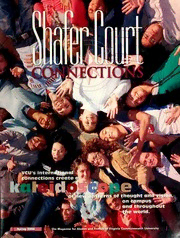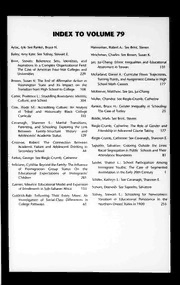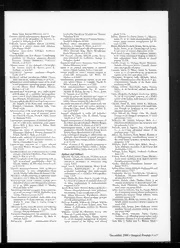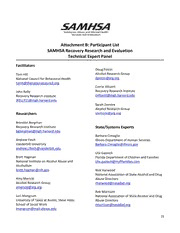
SAMHSA Recovery Research and Evaluation: Technical Expert Panel: Summary Report PDF
Preview SAMHSA Recovery Research and Evaluation: Technical Expert Panel: Summary Report
SAMHSA Recovery Research and Evaluation Technical Expert Panel Summary Report August 2018 This report was produced under contract with the National Council on Behavioral Health and their partner, Dr. John Kelly, Director, the Recovery Research Institute, Center for Addiction Medicine, Massachusetts General Hospital, Harvard Medical School, with support from the Substance Abuse and Mental Health Services Administration (SAMHSA), U.S. Department of Health and Human Services (HHS). Matthew Clune served as the SAMHSA Task Lead. The views, opinions, and content of this product are those of the author and do not necessarily reflect the views, opinions, or policies of SAMHSA or HHS. Dr. Kelly can be reached at: jkelly11@mgh.havard.edu. 1. SECTION 1 - Introduction and Overview 1.1. Introduction The TEP was convened by the National Council on Behavioral Health and the Massachusetts General Hospital (MGH) Recovery Research Institute (RRI) on behalf of SAMHSA in order to create a forum for sharing existing scientific knowledge regarding recovery support services (RSS) in addressing substance use disorders in the United States (please see Attachment A for the agenda.) The TEP provided a forum from which to hear from constituencies and stakeholders serving in relevant community organizations (e.g., Recovery Community Centers; Recovery Residences) or Federal roles (e.g., NIDA and NIAAA program officials), as well as leaders serving in state and systems-level capacities (please see Attachment B for a list of participants). The TEP was held at SAMHSA on August 1-2, 2018 at 5600 Fishers Lane, Rockville, Maryland. This report provides a summary of the TEP proceedings. It details the key points, findings, consensus statements,4 issues on which there was not consensus, recommendations, and proposed next steps. 1.2. Background Substance use disorders (SUD) and related conditions are among the most difficult and challenging public health problems facing the United States. These disorders confer a prodigious burden of disease, disability, and premature mortality, as well as an annual economic impact of more than $450 billion in health care costs, criminal justice expenses, and lost productivity.2, 3 While some struggling with substance use are able to reduce or abstain from use without formal intervention or treatment, many millions seek care each year. Research has demonstrated however, that while SUD treatment can be effective in helping to safely manage withdrawal symptoms (when needed) and stabilize individuals, there is a need for ongoing support over many months and years to facilitate and support stable long-term remission and recovery. Specifically, it has been shown that it can take several years and numerous treatment episodes for individuals to achieve one year of full sustained remission (i.e., twelve consecutive months without any SUD symptoms apart from craving), and another four to five years after initial sustained remission before the risk of SUD reoccurrence in the next year is no greater than that of the general population4. This suggests a need for long-term recovery support services and monitoring to ensure sustained stability and recovery. A cadre of recovery support services have emerged around the country that have varying degrees of empirical support for their effectiveness and cost utility. Yet, little is known from a systematic standpoint regarding the state of the science of these recovery support services and what further information 1 Consensus statement is a "snapshot in time" of the state of knowledge in a particular topic and shall serve as a public statement on a particular aspect of the discussed topic at the time the statement is made that a representative group of experts agree to be evidence-based knowledge. Its main objective shall be to counsel physicians on the best possible and acceptable way to diagnose and treat certain diseases or how to address a particular decision making area. 2Centers for Disease Control and Prevention. Excessive Drinking is Draining the U.S. Economy. https://www.cdc.gov/features/costsofdrinking/ Updated January 2016. Accessed Aug 15, 2018. 3 National Drug Intelligence Center. National Drug Threat Assessment. Washington, DC: United States Department of Justice; 2011 4 White, W.L. (2012) Recovery/Remission from Substance Use Disorders: An Analysis of Reported Outcomes in 415 Scientific Reports, 1868-2011. Philadelphia Department of Behavioral Health and Intellectual disAbility Services and the Great Lakes Addiction Technology Transfer Center. 1 would need to be gathered to confidently inform national efforts to appropriate resources in order to implement such services more broadly across the country. The focus on recovery support services research and evaluation as the TEP topic was chosen to help stimulate additional discussion and input from relevant national stakeholders such as those engaged in frontline community organizational levels as well as at the federal and state government levels. Combined with the systematic research review and summary conducted prior to the TEP by the RRI across the six major RSS domains (see below), the TEP was designed to augment and enhance the formation of a research and evaluation agenda that maximizes the efficiency and effectiveness of RSS as a component of national efforts to address endemic SUD problems. 1.3. Process of TEP meeting Potential TEP participants were chosen based on their expertise as community recovery support service leaders, clinicians, policy makers, and researchers, including experts in prominent positions in relevant federal and state agencies. Appendix 1 contains the names and affiliation for all of the invitees. The one and one-half day long in-person TEP meeting took place at SAMHSA headquarters at 5600 Fishers Lane, Rockville MD on August 1-2, 2018. The background and rationale for the need for recovery support services covered six domains: 1) mutual-help organizations; 2) clinical models of continuing care; 3) peer-based recovery support services; 4) recovery residences; 5) recovery community centers; and 6) recovery supports in educational settings. The meeting opened with an overview on the background and rationale for the focus on recovery support services by John Kelly, Ph.D., followed by a summary of the findings from a systematic scientific review of the empirical literature across the six domains listed above. A copy of Dr. Kelly’s presentation is attached in Appendix 2. Each of the six segments was followed by a “view from the field” given by a recovery community expert in that area. Following the presentations from each domain was a full- group discussion, facilitated by Tom Hill from the National Council. The first day ended with a summary of all that was presented, including any overarching questions, thoughts, or viewpoints. This discussion, in addition to RRI’s systematic scientific review, provided a framework from which to guide the discussion on the second day. The second day discussion, facilitated by Tom Hill, worked towards crafting a work plan and research agenda from which to move forward. 2. SECTION 2 - TEP Discussion This report begins by providing an introduction to the topic of recovery support services in addressing SUD and then describes the key points discussed in the TEP. Findings from the TEP are described in the following section followed by consensus statements arrived at through the discussions. Issues on which there was no consensus are also documented. In the final section, recommendations and next steps are detailed. 2.1. Introduction The focus of the meeting was based on the six identified RSS domains and their application in addressing remission and long-term recovery from substance use disorders. 2 Mutual-help organizations (MHOs) are the oldest and most ubiquitous type of RSSs. Alcoholics Anonymous (AA) and other 12-step based MHOs (e.g., Narcotics Anonymous) are the most well-known of these. These are most often peer-led entities which, through group meetings in mostly rented venues, facilitate and support ongoing abstinence (or reduced use) from substances and enhanced psychological and emotional well-being and quality of life. Since the origin of AA in 1935, a myriad of alternative MHOs have emerged and started to grow, such as Self-Management and Recovery Training (SMART), Women for Sobriety, and LifeRing. RSS delivered in clinical settings are “extensive”, or low intensity, interventions or brief clinical contacts designed to maintain the momentum of recovery, sustain remission, and enhance the chances of long- term stability and recovery. As the name implies, these continuing care interventions occur following an acute care index episode (e.g., an inpatient detoxification; intensive outpatient treatment phase) and can last from several months to several years. Peer-based Recovery Support Services (P-BRSS) are delivered by peer support workers, working in a variety of roles, such as peer recovery coaches or peer support specialists5. Peer support workers bring lived experience as individuals who have overcome SUD and are tangible and observable role models of hope and recovery. This common experience helps facilitate rapport and trust among others seeking or establishing recovery. Recovery Peer support workers can serve as independent consultants, but most often work in recovery community support contexts (e.g., within Recovery Community Centers) or are employed by SUD treatment providers, embedded within clinical teams. They often function as linkages to other vital programs (e.g., primary care and mental health services, social services, housing, employment), and other community supports in order to maximize the chances of successful continuing care and remission. They provide a level of flexibility and community orientation to help meet the needs of those in or seeking recovery from SUD. Recovery Community Centers (RCCs) are hubs of recovery support, centered in the hearts of communities to help build recovery capital (i.e., resources to aid and sustain recovery). These are non-residential centers that provide space for recovery support group meetings and access to recovery coaching (see above) as well as facilitating linkage to employment, training, and other social services. They also provide space for and help facilitate rewarding social community activities and community engagement. Recovery residences are houses in communities that are typically peer-led and provide a substance-free and recovery-supportive living environment that encourages prosocial activity (e.g., employment/training/education; community engagement). These can increase the chances for successful long-term recovery through strong social support, recovering role models and coaches, and ongoing inter-personal accountability and monitoring. Education-based recovery support services consist most typically of recovery high schools (RHSs) for adolescents and collegiate recovery programs (CRPs) for emerging adults or returning older students. For adolescents affected by SUD, RHSs are most often separate and independent educational entities that provide recovery supportive and conducive environments that are safe and substance-free, allowing undistracted focus on academic achievement – as well as the developmental skills – while 5Increasingly, peer recovery workers are family members whose 'lived experience" derive from a loved one's struggle with addiction, rather than their own. Burgeoning peer recovery specialist certifications have also appeared in states nationwide in recognition of this new market for peer recovery workers. 3 attending therapeutically to SUD recovery needs. CRPs, in contrast, are typically embedded within existing institutions of higher education and provide a professional and peer-led recovery-supportive environment that helps protect against relapse risk in college environments that often can increase risks for alcohol or other drug re-engagement. 2.2. Findings of the TEP Findings from a systematic review of the evidence on recovery support services were presented at the TEP, including a summary appraisal of the available research across three dimensions of the Global Quality Rating (GQR) of Empirical Support for Service: 1) the quantity of the evidence for that service (i.e., the absolute number of studies that had been published for this type of service); 2) the quality of the evidence for that service (i.e., of the available published studies, what proportion were of high methodological rigor so as to be able to clearly evaluate whether there is a causal benefit attributable to that particular service); and 3) the degree of confidence that can be placed on the available evidence in support of that particular service. The quantity of available evidence was graded ordinally across five dimensions (small; small-medium, medium, medium-large, large). The quality of available evidence was also graded across five dimensions. (weak; weak-moderate; moderate; moderate-strong; strong). Finally, the appraisal of the degree of confidence that can be placed in the evidence in support of each particular recovery support service was graded across these same five ordinal categories (e.g., weak; weak-moderate; etc.; see table 1). This was completed and presented for each of the six recovery support service domains and, where studies were available, included the potential of each service to provide health care and other societal cost offsets (e.g., by reducing emergency room admissions/inpatient hospital stays; arrests/criminal justice costs; and by increasing employment/productivity). Table 1. Global ratings across three dimensions of each type of recovery support service Service Quantity Quality Support for RS 1. Mutual help organizations Large Strong Strong 2. Clinical models of long term Large Strong Moderate-Strong recovery management 3. Peer-based recovery support Small-medium Moderate Moderate services 4. Recovery Community Centers Small Weak-Moderate Weak-Moderate 5. Recovery Residences Medium Moderate-Strong Moderate-Strong 6. Education-Based Recovery Small Weak-Moderate Weak-Moderate Supports Of note, a lack of available evidence does not mean that these services are not helpful or cost-effective; merely that confidence in the empirical support for that service is low. The fact that these various services exist at all and have grown in number, provides at least a minimal level of observational evidence that they may be of value at least to some segments of the populations in need, and may be of value to many individuals. 4 Mutual-Help Organizations: Evidence for MHOs was mixed and heavily weighted toward Alcoholics Anonymous (AA) and the clinical treatments that have been designed to stimulate participation in AA (“Twelve-Step Facilitation” (TSF) treatments). Because AA is the oldest and by far the largest and most influential, nearly all available evidence was on AA and TSF treatments. Sometimes these studies included clinical facilitation and linkage to any kind of 12-step community MHO (e.g., AA, or Narcotics Anonymous or Cocaine Anonymous). The quantity, quality, and support for the service of AA/TSF was deemed as strong because a high number of randomized-controlled trials (RCTs) and quasi-experimental studies had been published. Furthermore, although TSF is not AA per se (and therefore not technically evaluation of an MHO service), several studies included analyses to determine whether the reason why TSF outperformed other treatments and found that the outcome was due to the TSF intervention better stimulating patients’ involvement in community-based AA groups during and post-intervention. For other MHOs, the quantity and quality of evidence was deemed as weak-moderate as was the evidence in support these non-AA MHOs. There was also strong evidence of substantial health-care cost offset potential of implementing TSF interventions in clinical settings. Clinical Continuing Care Services: For clinical continuing care services, there was a large quantity of published studies, and the quality of this evidence was deemed strong as many of the available studies were randomized controlled trials (RCTs) and well-controlled quasi-experiments. There was also moderate evidence that implementing high “extensity” monitoring of SUD individuals across several years following an initial acute care stabilization treatment episode (e.g., by implementing “recovery management check-ups” akin to the management of other chronic health conditions such as hypertension or diabetes) and, when necessary, facilitating linkage back to treatment, can improve clinical outcomes and reduce health care costs and other costs to society. Peer-Based Recovery Support Services: Despite the increased prevalence of peer-based recovery support services implementation (e.g., “Recovery Coaches”), the quantity of available evidence for this was deemed weak-moderate but the quality was deemed moderate as RCT-level evidence was available. That said, most of the evidence did not pertain to more usual SUD patients seen in typical SUD treatment settings (e.g., outpatient) with existing evidence consisting of inpatients with severe mental illness and SUD or other special populations (e.g., women with HIV and SUD). No studies, for example, examined the relative advantage of including recovery coaches in common outpatient settings or residential settings relative to treatment as usual. No studies have investigated the levels of intensity or duration of recovery coaching services. Consequently, little is known empirically about the incremental clinical and recovery utility of implementing these services and in which particular settings these services may be most impactful. Recovery Community Centers: In regard to Recovery Community Centers, only three available descriptive single-group studies were available. Thus, the quantity and quality of the evidence were deemed weak and the current confidence in implementing these services based on the evidence is rated as weak. One federally-funded largely descriptive study that includes a single group prospective design has been completed but results are not yet published and are forthcoming. Recovery Residences: The available evidence for Recovery Residences was deemed moderate-strong as was the quality of the evidence as several of the studies were RCTs or quasi-experimental in design. Also, available evidence strongly suggests recovery residences (e.g., Oxford Houses) have the potential to enhance clinical and recovery outcomes and to reduce costs to society in terms of health care and criminal justice costs as well as decreasing productivity losses as these interventions are shown to enhance employment rates substantially relative to usual residential living situations. 5 Education-Based Recovery Services: The amount and quality of the evidence available on recovery high schools and collegiate recovery programs was deemed small and weak-moderate, respectively, and thus the confidence that can be placed on the implementation of such services based on the evidence is currently weak-moderate. 2.3. Key points discussed during the TEP based on the Research Findings Mutual-help organizations (MHOs): • While MHOs operate relatively in the same way (e.g., through role modeling, accountability, exchange of information), do they appeal to different types of individuals? • What are the optimal levels of attendance and involvement that are associated with more positive outcomes? • What are the barriers to having a greater available variety of MHOs in all communities? • How can we cost-effectively promote attendance at MHOs? • What would be the most effective method of growing non-12 step groups, so a greater representation of MHOs is available in communities? Clinical Continuing Care: • How is continuing care conceptually and practically integrated into mental health (MH) and SUD care, beyond co-location? • What types of continuing care are needed for which individual, for how long, and in what setting/context? • How clear is the evidence of the relative incremental benefit of integrated vs. parallel vs. sequential care for MH and SUD (even though conceptually integrated care makes good clinical sense)? • What are the challenges to finding qualified professionals trained in integrated models? • What is the need for uniform supervision instead of segmented supervision in multi-disciplinary team-based approaches? o Need for psychometrically validated, brief, standardized practice-based measures to help make up for the lack of funding for research in this area. • What is known about the outcome of those who used peer-based vs professional continuing care resources? • How can states make these integrated models work, not just clinically but financially and operationally? What barriers do States need to address in order to lift barriers to care due to different reporting requirements for providers (how can states guide providers through documentation requirements)? Peer-Based Recovery Support Services: • In a modest but growing number of states, services for peer recovery coaches are Medicaid reimbursable, but the evidence for the benefit of their work remains weak-moderate. Continued development of an evidence base for P-BRSS will facilitate increasing numbers of States willingness to make these services Medicaid reimbursable. • There is great concern about maintaining “peerness” for PBSS workers and that the roles do not become over-professionalized. There is a concern that peers are taking on clinical roles and receiving training that distances them from their peer role that causes “role drift.” 6 • There is a need to determine where peer support workers fit in to the continuum of treatment, at what stage of change, and their role in engagement; the capacity for peer workers to engage needs to be better explored. • In states where P-BRSS is Medicaid-billable, the payment rate has often been inadequate for community-based providers to be incentivized to hire peer workers. What approaches can address this? • What are the acceptable medical interventions to treat SUD? Where do peer workers fit into the larger medical model? How does the peer workforce show itself to be a legitimate part of treating a medical disorder? • It is important to not overlook how critical peer support is for adolescents. Where do we find peers for them and how do we find a model to credential them? P-BRSSs are the foundation of Recovery High Schools. Finding true peers for high-school age children is particularly challenging; how would you credential an adolescent providing P-BRSSs? • What array of RSS work best for adolescents vs. adults? What are the cost offsets? Recovery Community Centers: • RCCs as a central hub for recovery, especially in the opioid crisis, but how does one evaluate their unique contribution among the array of strategies individuals might use to aid recovery? • Terminology of “Harm Reduction” vs “meeting people where they are” – it was argued that the latter may be less stigmatizing and that these centers typically will do “whatever it takes to meet an individual’s needs and help them stay alive.” • There is a need for and challenges to collecting, validating and standardizing data at RCCs. • There is often a tension regarding who gets to decide how the center evolves: various stakeholders including, funders, community members, staff/leadership, or recovery advocates? Recovery Residences: • There have been historical and current tensions about policies and practices regarding the use of medication-assisted treatment (MAT; e.g., methadone, buprenorphine) among residents. • Because of the above, there is a need to design and/or evaluate MAT-specific residences. • There is a need to develop a greater understanding about the role of “Housing First” vs “recovery housing” and their intersection and sequencing. • Better data collection and evaluation needs to occur in recovery residences, which is a challenge in many peer-run houses. • Greater clarity is needed in the labels, definitions, and categorization, of different recovery residences (e.g., sober homes vs oxford houses vs halfway houses etc.) so that policymakers, purchasers of such services, and consumers are more aware of the nature, scope, and purpose, of each type. Education-based Recovery Support Services: • Dearth of research and long-term impact of these services across young adulthood and beyond; these are likely to have long-term benefits as well as short-term benefits. • Need to understand barriers to implementation and sustainability of recovery high schools. • Collegiate recovery programs are easier to implement and sustain as they require fewer resources and are embedded or added to existing infrastructure more easily than recovery high schools, which are typically completely separate entities. • Need for evaluation of recovery high school elements that might be embedded or integrated into existing high schools relative to high school as usual, and whether separate recovery high 7 schools hold a distinctive advantage over recovery high school elements that might be merely integrated into a regular high school environment. • How to fund recovery high schools given economies of scale (e.g., most schools are 1,000+ students whereas recovery high schools are typically only a few dozen students). How can recovery high schools attract more students in need of such services? 2.4. Consensus statements • There was overarching consensus that all six domains of RSS merited further research, especially in light of the opioid epidemic and the ongoing lack of treatment access. • There was an interest in determining what RSSs work best for specific populations, for example, people with high vs. low recovery capital, those with specific types of SUD (e.g., opioid vs alcohol) and people of different demographic and socioeconomic backgrounds. • In general, all recovery support service providers need to better identify and engage individuals on medications for opioid use disorder, particularly agonist therapies (e.g., buprenorphine, methadone). • Regardless of their setting, peer workers need to maintain their “peerness.” This means setting up firewalls that peer work does not become clinical in nature or over-professionalized. • RSS lack viable, sustainable funding streams, which has inhibited their growth and ability to commission research on their programs. • In lieu of robust formal research endeavors, systematic and validated data collection and rigorous program evaluation will be key for RSS providers to demonstrate the effectiveness of their programs. 2.5. Issues on which there was no consensus • There was no consensus on the ideal payment structure for RSS, whether that be through grants or insurance coverage like Medicaid. • There was no consensus on what a sufficient level of evidence would be to support RSSs as evidence-based practices. • The group did not have time to reach consensus on a set of recovery metrics but did agree that the metrics would go beyond abstinence and could be compiled from existing psychometrically- validated sources. 2.6. Recommendations 1. Expanding Recovery Research: Recovery support providers/advocates should feel empowered to partner with academic research institutions and approach the NIH with their research ideas, especially in light of the additional funding NIH has received related to the opioid crisis. Requests do not have to be limited to one type of substance use (e.g., alcohol vs. other drugs), as NIAAA and NIDA may choose to partner and co-fund studies. o Potential federal funders of recovery research need to have recovery-oriented review panels. ▪ Multiple TEP participants supported the idea of creating a Recovery Trials Network, akin to the NIDA-funded “Clinical Trials Network” whereby large-scale implementation studies could be conducted across multiple sites to help determine the relative increased benefit of providing recovery support services. 8 2. Array of Evidence: We need a broad array of evidence related to RSSs, both experimental and non-experimental. Due to the cost and significant time-lag involved in gathering and summarizing data from prospective RCTs and quasi-experimental designs - valuable as they are - practice-based evidence (i.e., systematic collection, aggregation, and summarization, of psychometrically validated standardized metrics of engagement, retention, and clinical and recovery-related outcomes at the “point of care”) will be important to collect from all RSS and RSS service users alongside more formal evaluations using experimental/quasi-experimental or well-controlled observational studies. o Cost-benefit analyses are also needed to better inform policy and research discussions. 3. Recovery Metrics: RSS need metrics that are standardized and validated to facilitate compatibility of measures. Without such standardization, programs and systems cannot know if they are underperforming or doing better than average, or what changes may be needed to enhance the effectiveness of service provision. ▪ An RSS assessment should be simple, comprehensive, brief and easy for RSS providers to collect from RSS program participants. ▪ The nature of the data collection across the six RSS domains should be systematic and a matter of course (e.g., akin to always obtaining blood pressure readings in the treatment of hypertension). ▪ The Recovery Data Platform (RDP) is one example of a cloud-based software solution designed to assess and collect metrics. It collects more than 400 unique data points and has the potential to aid Recovery Community Organizations and Peer Service Providers by providing tools and measures (e.g., the Brief Assessment of Recovery Capital-10 item; Vilsaint, Kelly et al, 2017) that can be used to inform the management of peer recovery coaching programs. This was recommended as a potential starting place for gathering metrics across RSS nationwide. There was consensus that stakeholders did not need to reinvent the wheel to start developing such a platform or to track impact, but metrics and software still need to be agreed upon. ▪ A consensus panel of recovery experts could be easily formed to identify metrics. 4. Standardization of RSS: State systems need standard service definitions, performance metrics, and minimum core competencies to support and evaluate RSS. States currently lack any benchmark to determine the fidelity and efficacy of their RSS programs, including in relation to other states. 5. Program Evaluation: Recovery support services provided on the ground should include an evaluation component from the program’s outset. Measurement should be the foundation of RSS, not an afterthought. Addiction/mental health “vital signs” should be measured at every RSS encounter in the same way that physical vital signs are measured in the management of other illnesses (e.g., blood pressure in hypertension). o RSS providers lack connection to researchers that could help design and carry out an evaluation. SAMHSA could facilitate connections between RCOs and recovery researchers. 9
The list of books you might like

Mind Management, Not Time Management

A Thousand Boy Kisses

Better Than the Movies

Haunting Adeline

Commencement
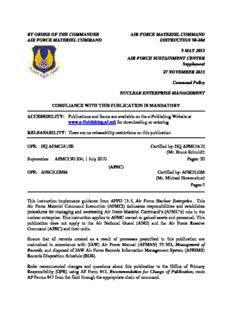
by order of the commander air force materiel command air force

Pablo Escobar em flagrante
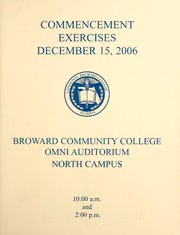
Commencement Exercises December 2006

Bon Dia Aruba (21 Januari 2006)
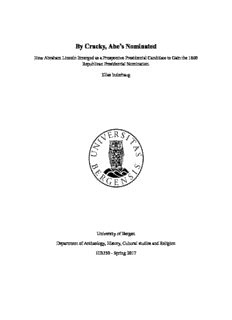
By Cracky, Abe's Nominated

Ungleichheit Warum wir nicht alle gleich viel haben müssen

Deutsche Geschichte für Dummies
![Algebraische Strukturen [Lecture notes] book image](https://cdn.pdfdrive.to/media/content/thumbnails/0075a463-535e-4eda-ad56-e43eea31d595.webp)
Algebraische Strukturen [Lecture notes]

PR - Связь с общественностью. Хрестоматия
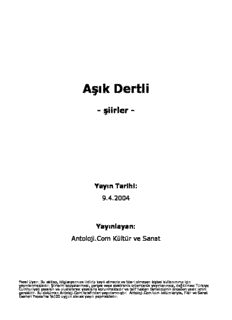
Aşık Dertli
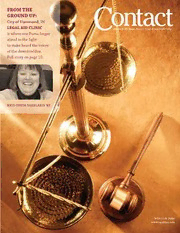
Contact Magazine - Winter, 2006 - Saint Joseph's College
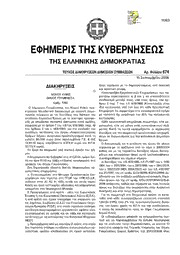
Greek Government Gazette: Part 7, 2006 no. 674
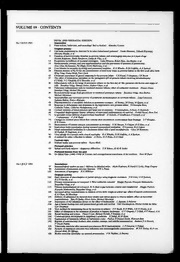
Archives of Disease in Childhood 1993: Vol 69 Table of Contents
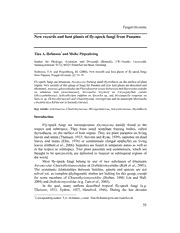
New records and host plants of fly-speck fungi from Panama
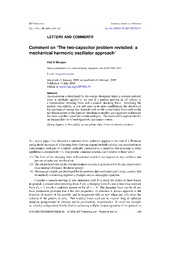
DTIC ADA550999: Comment on The Two-Capacitor Problem Revisited: A Mechanical Harmonic Oscillator Approach
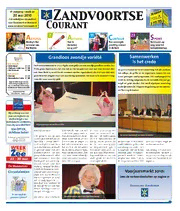
Zandvoortse Courant 2010 week 20
